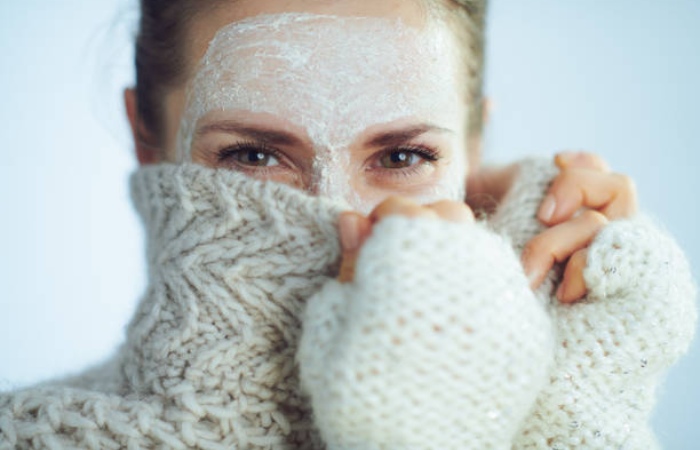It doesn’t seem that way to your dry winter skin. Your skin is darker now (and those dark patches are more common) as winter is in full swing. One of the best ways to combat winter darkness is to exfoliate, but you can’t just get by with a physical scrub or chemical product.
In addition to drier skin, it tends to be more sensitive during the colder months, requiring a more subtle approach to exfoliation. For the full review, we asked dermatologists how to exfoliate your skin in winter.
Why Does Skin Darken in Dry Winter Skin?

During the winter months in cold climates, the air is drier and contains less moisture dry winter skin, which means there is less moisture in the skin, explains Anthony Rossi, MD, FAAD, FACMS, a board-certified dermatologist.
Indoor heating can also increase dryness, and the combination of cold winds and harsh temperatures can further strip the skin of its natural oils. The result is a dry, dull, flaky complexion dry winter skin.
Is it Possible to Exfoliate your Skin in Winter?
Not only are you “allowed” to exfoliate your skin during the winter, but it’s a good step to incorporate into your routine. “Exfoliation can still help get rid of dead skin cells on the surface of the skin, called the stratum coreum,” says Dr. Rossi dry winter skin.
Exfoliation is beneficial because it helps us renew the top layer of the epidermis dry winter skin.” However, she thinks you should be careful not to over-exfoliate, which causes skin inflammation, damaging cells and leaving you looking even more worn.
How to exfoliate your skin in winter

Lack of moisture in your skin (and the air) naturally weakens the skin’s protective barrier, making it more prone to irritation and sensitivity. For this reason, Dr. Rossi says that “exfoliating in the winter is a balancing act.”
“Once a week [for facial skin] is usually a good rule of thumb if you’re using manual exfoliation,” she says. “If you’re using a gentler chemical form of exfoliation, you can increase it to usually two or three times a week dry winter skin.”
She says mild lactic acid is an excellent exfoliator for winter because it’s the most hydrating of the alpha hydroxy acids (AHAs). It provides gentle chemical exfoliation without drying the skin.
Another option is to switch to a gentle exfoliating facial cleanser, such as one with gentle enzymes, says Howard Sobel, MD, FACS, an attending dermatologist-aesthetic surgeon at Lenox Hill Hospital in New York City. Depending on your skin’s needs, you can use this product daily or alternate it with a hydrating cleanser every other day dry winter skin.
The same goes for body exfoliation. Physical scrubs made from salt and sugar can work on particularly tough areas like knees and elbows, but gentler scrubs or AHA/enzyme-based body cleansers are a gentler option that also works.
Common winter peeling mistakes
When exfoliating your skin in the winter, avoid these common mistakes.
Inadequate hydration: Hydration is very important in winter, says Dr. Sobel. Keeping your skin well hydrated helps keep the barrier firm and your complexion glowing and allows you to exfoliate as needed without worrying about irritation or sensitivity. Moisturize your skin immediately after exfoliating and as part of your daily routine dry winter skin.
Using harsh scrubs: “I would avoid any germs that could damage the skin,” Dr. Rossi says. “Exfoliating pads can sometimes be too harsh, especially if your skin is already dry winter skin.”
Over-exfoliate: Exfoliating your skin with different products or more frequently can be tempting, but this can have the opposite effect. Stick to once or twice a week and pay attention to what else you incorporate into your routine. For example, retinol combined with AHAs can be too potent.


